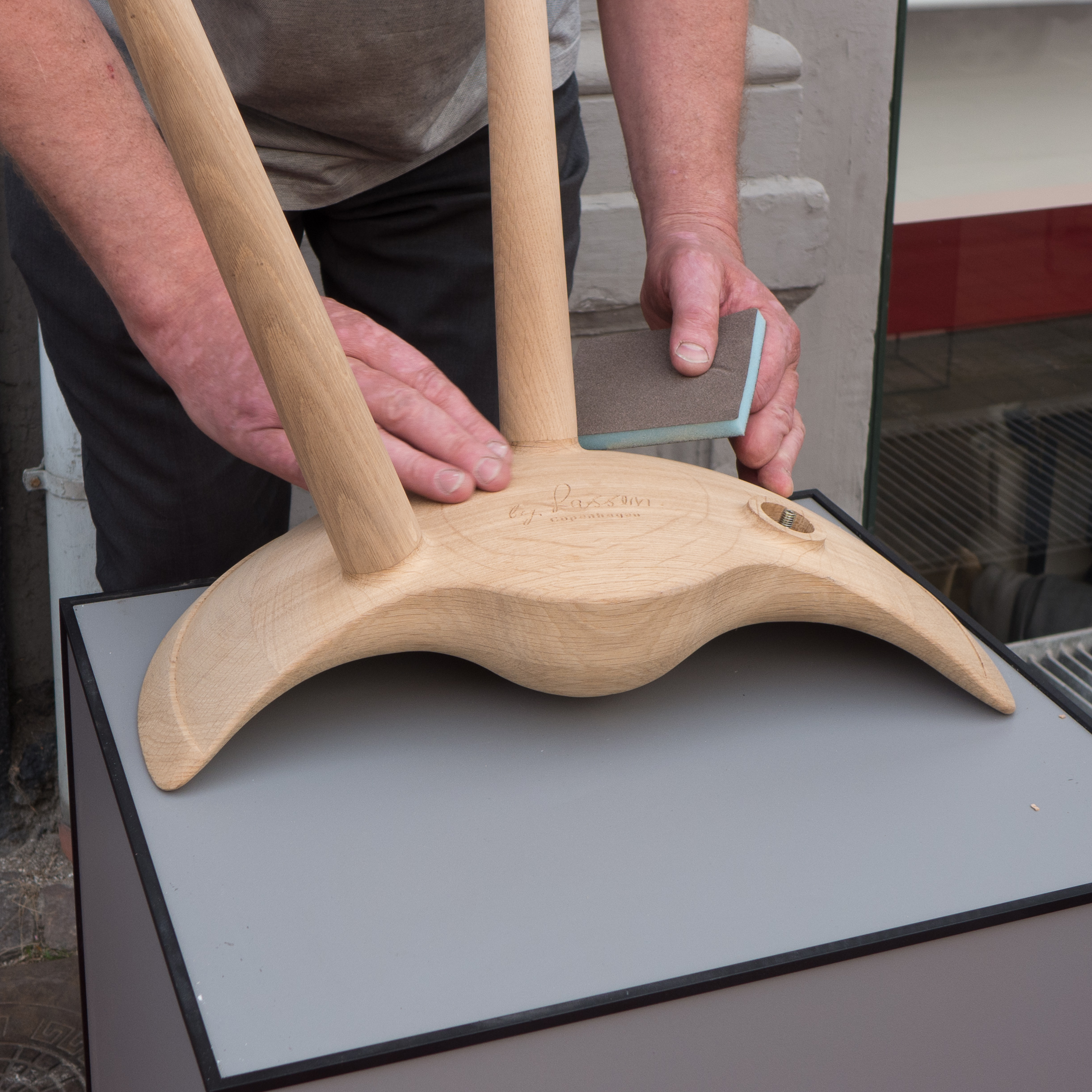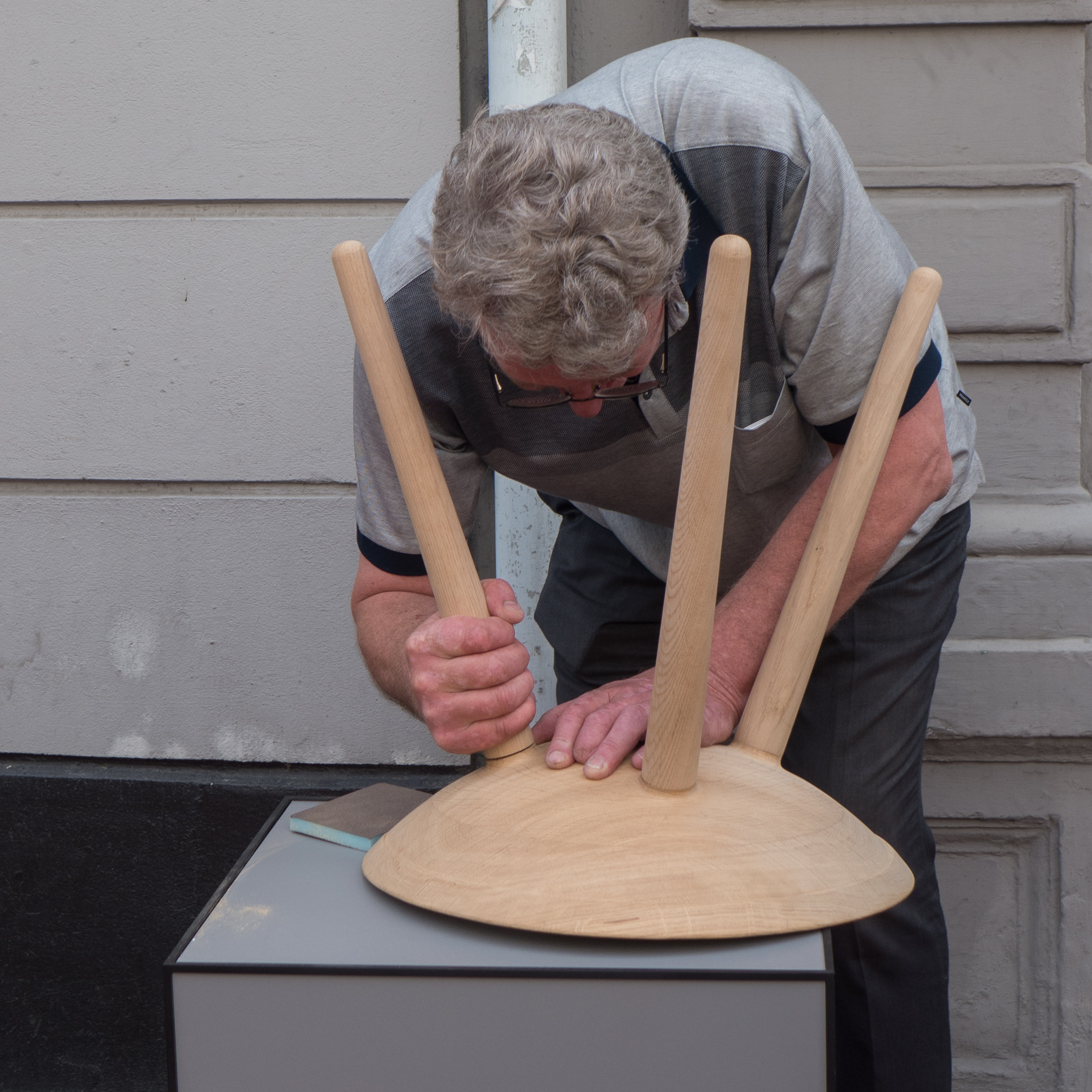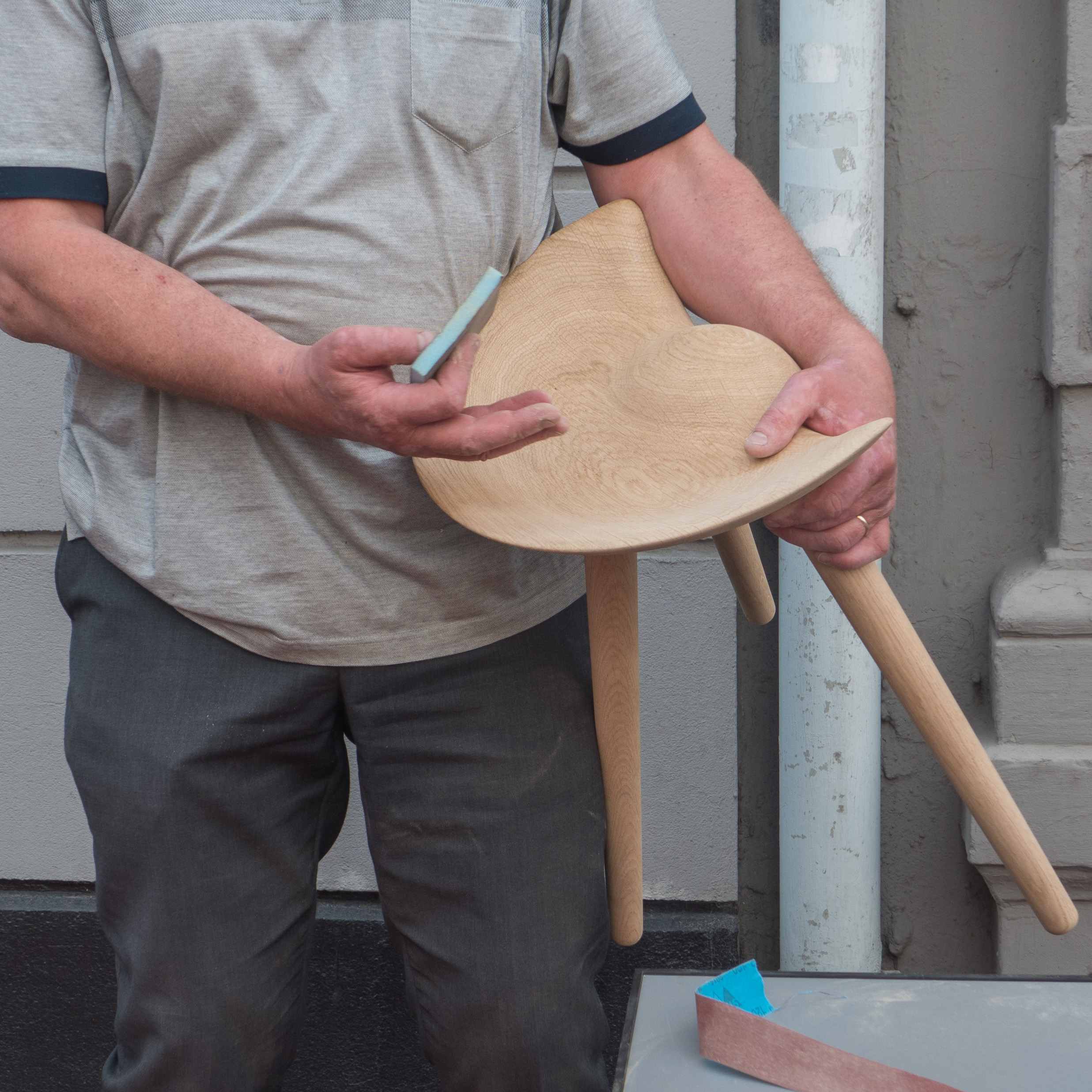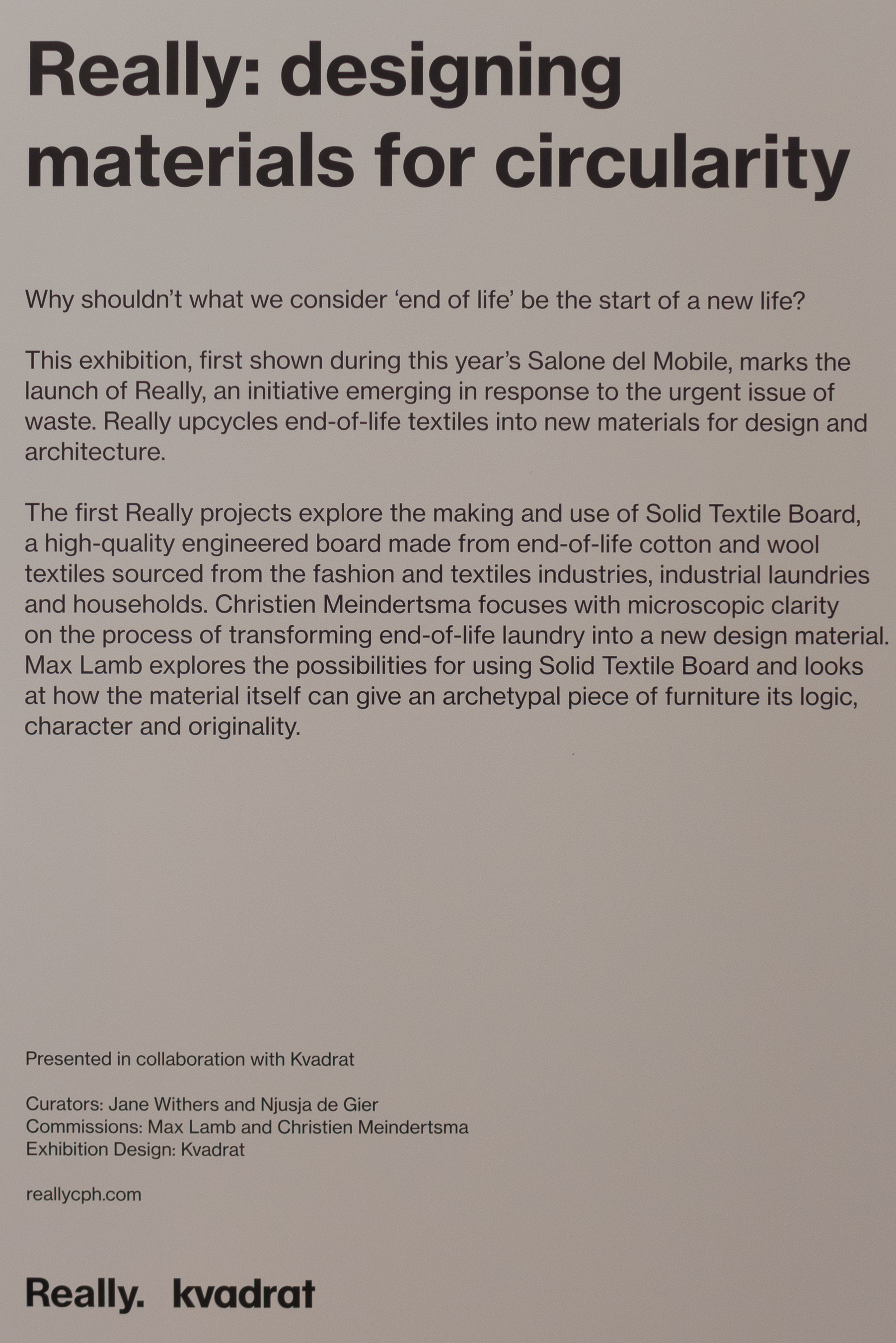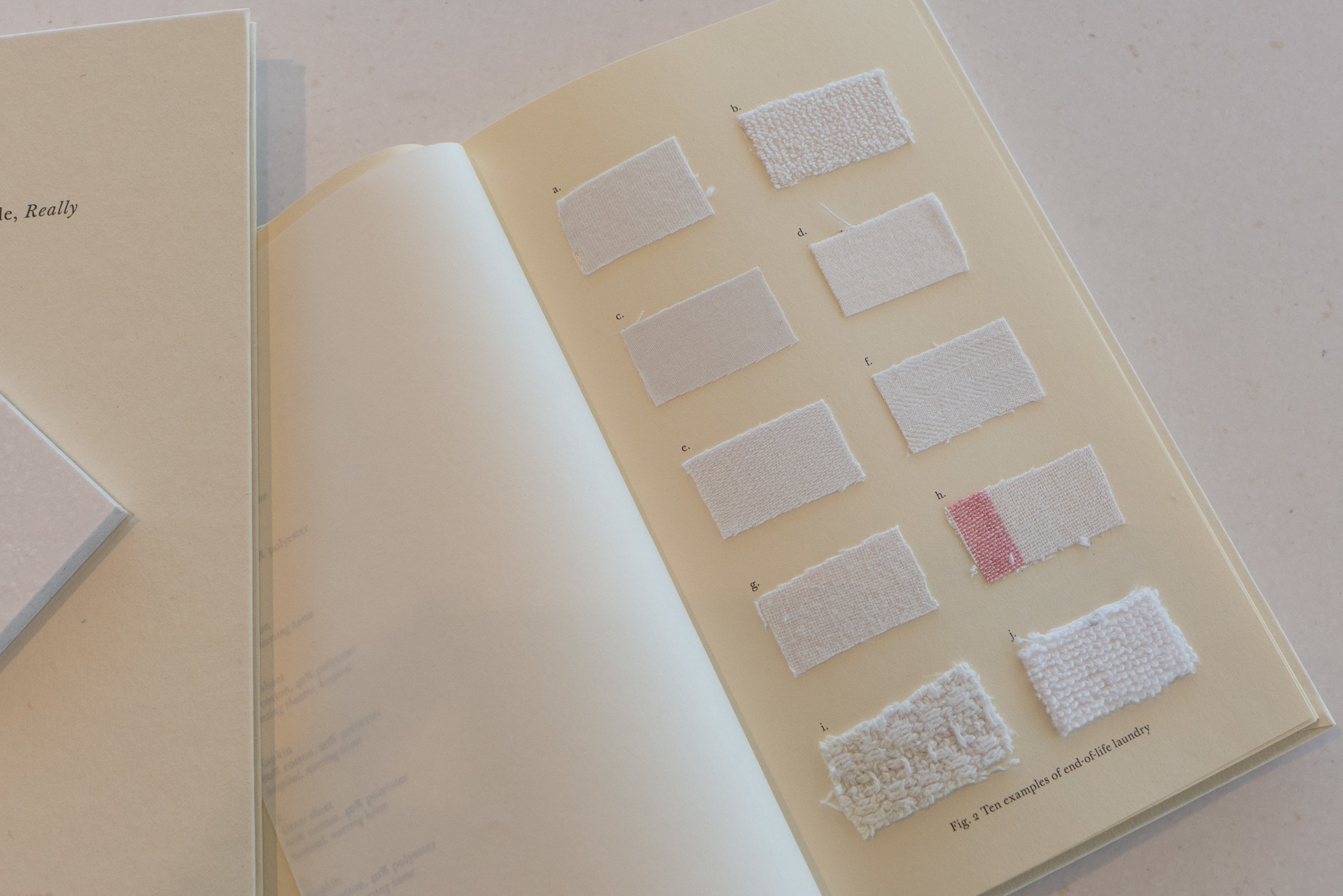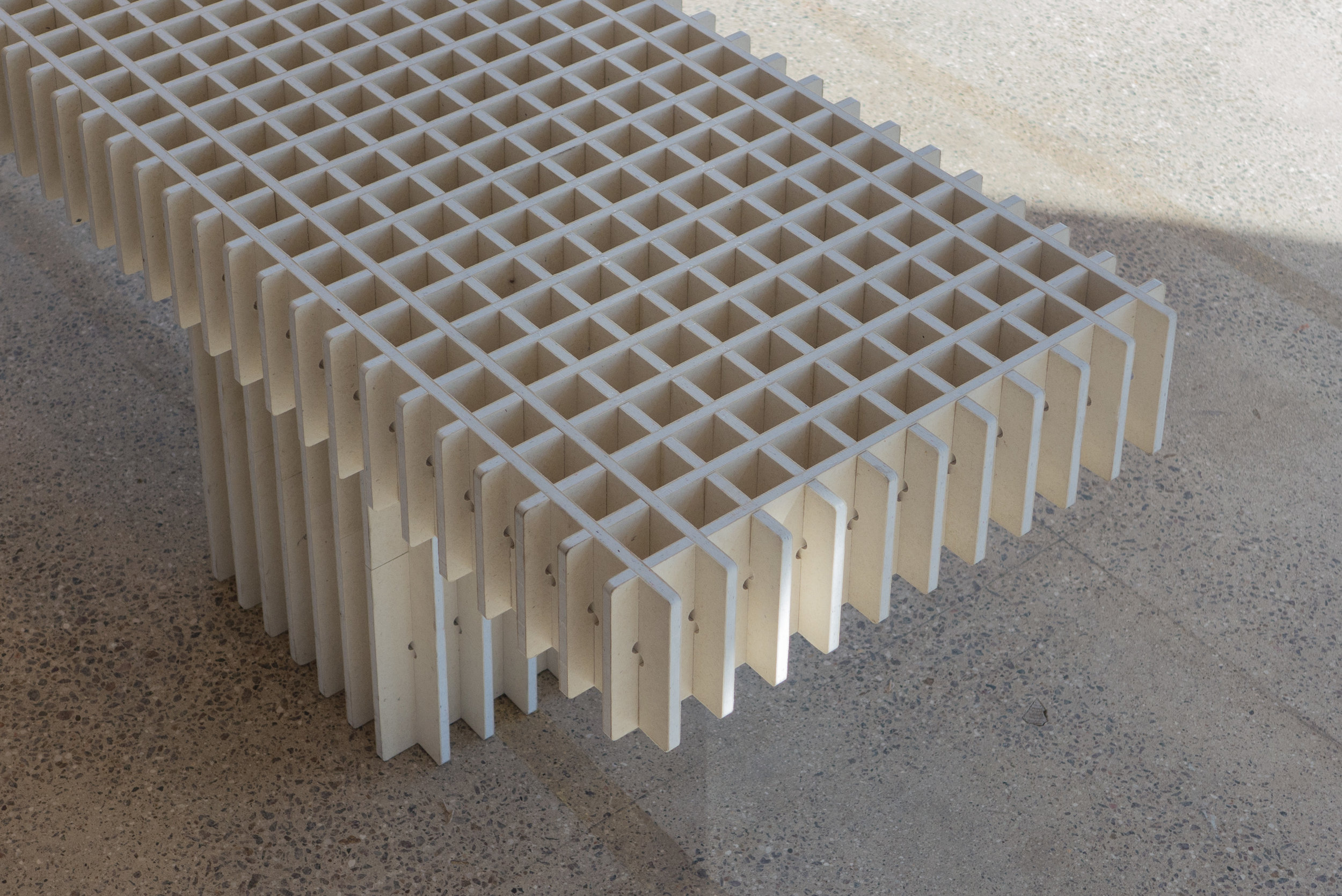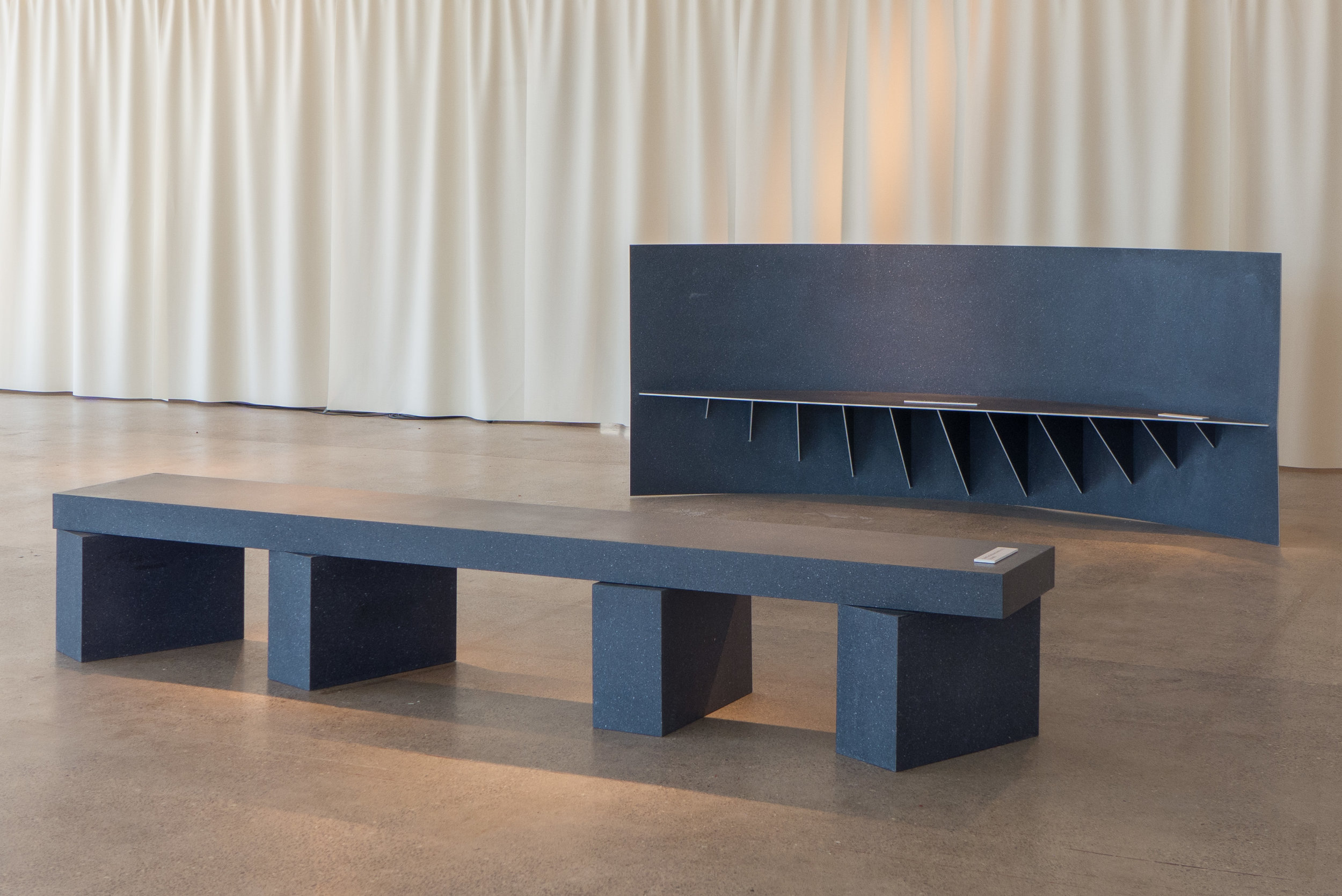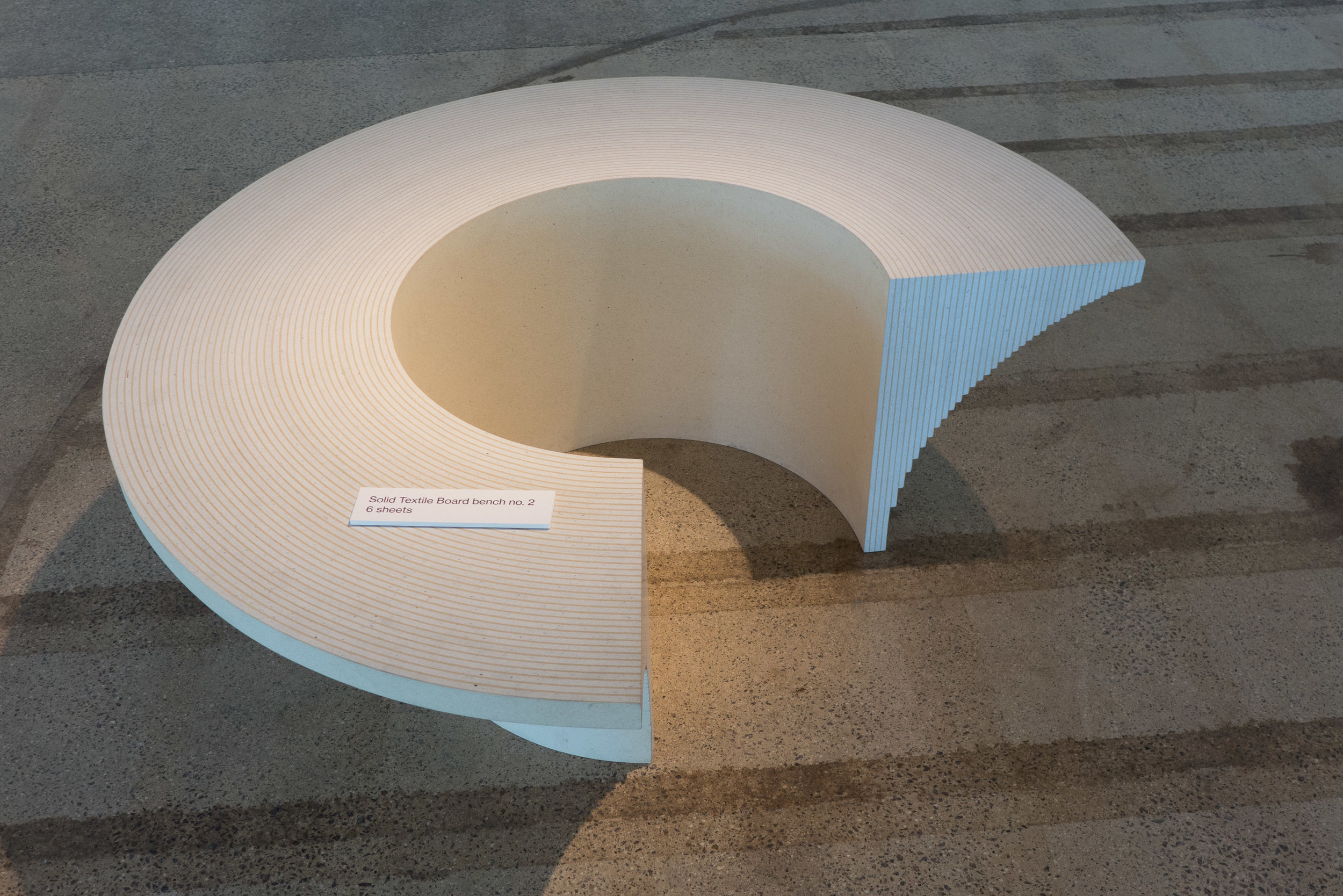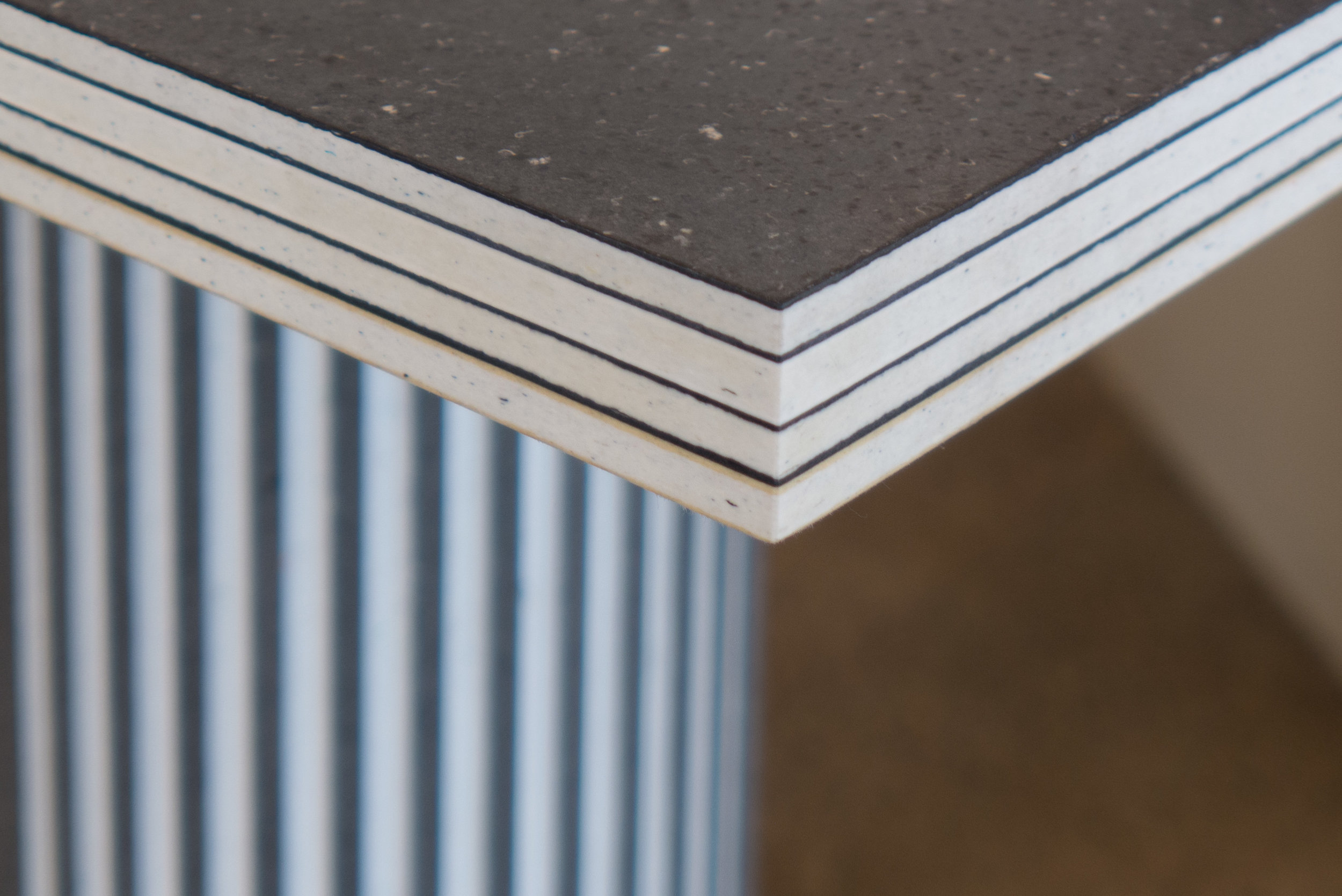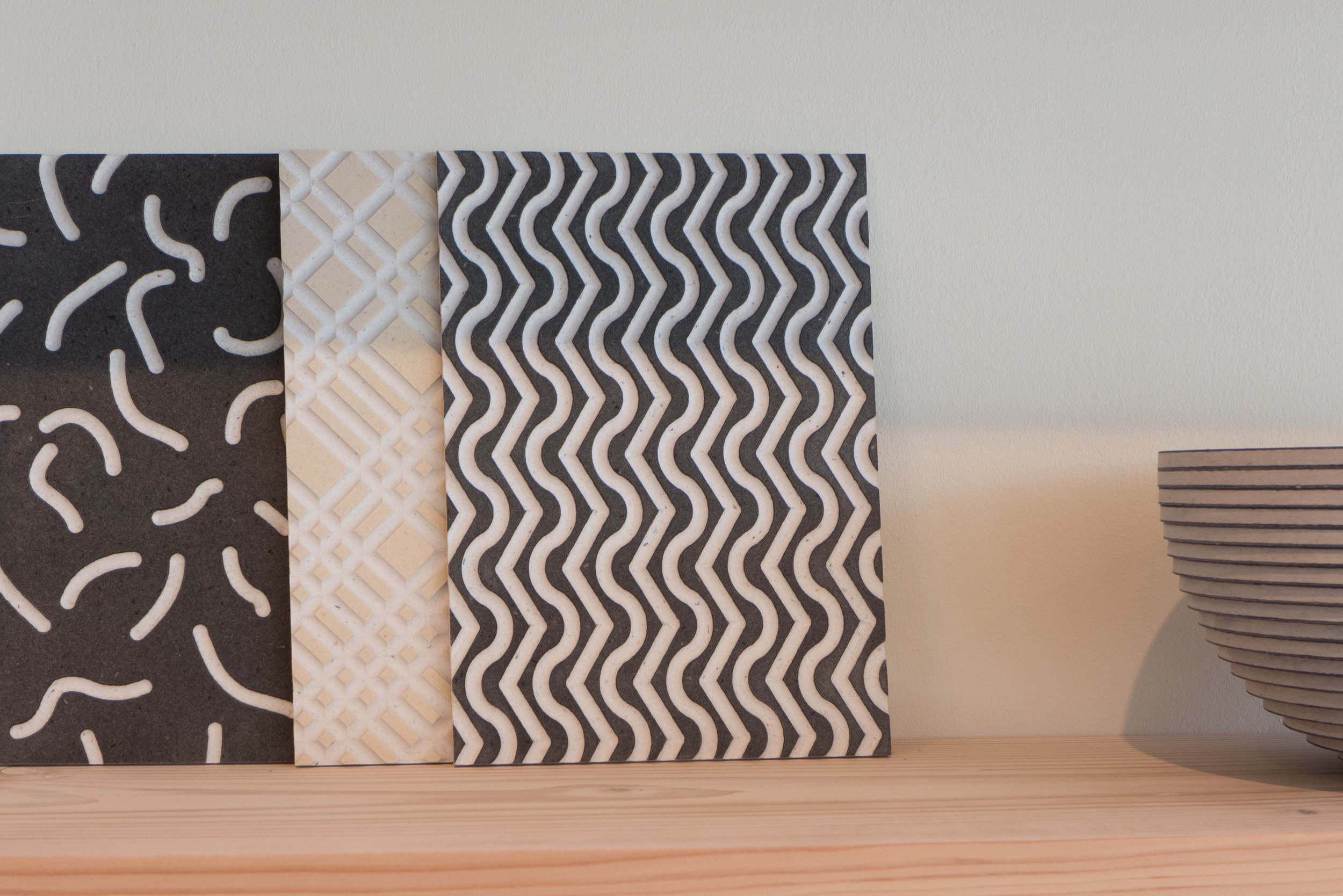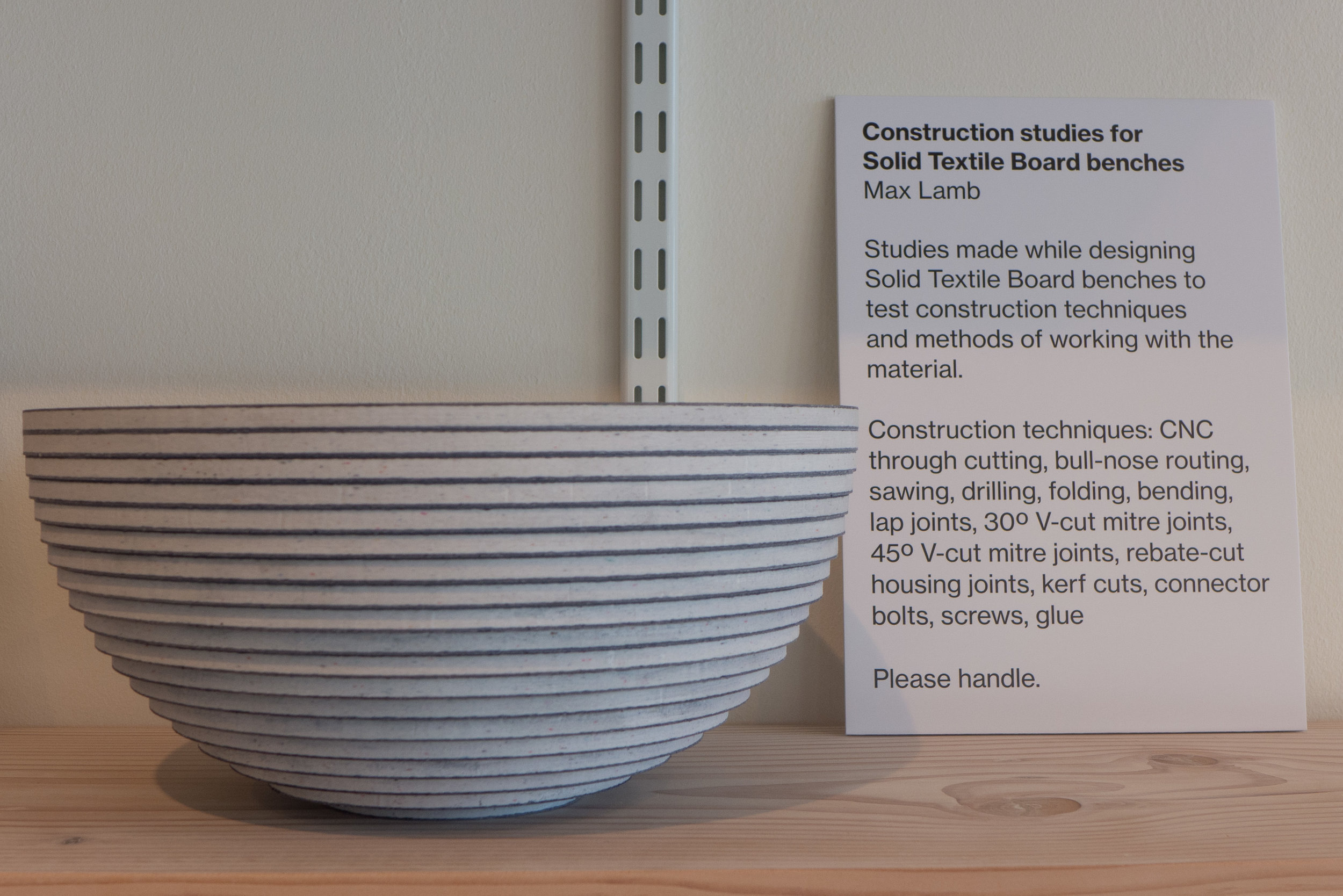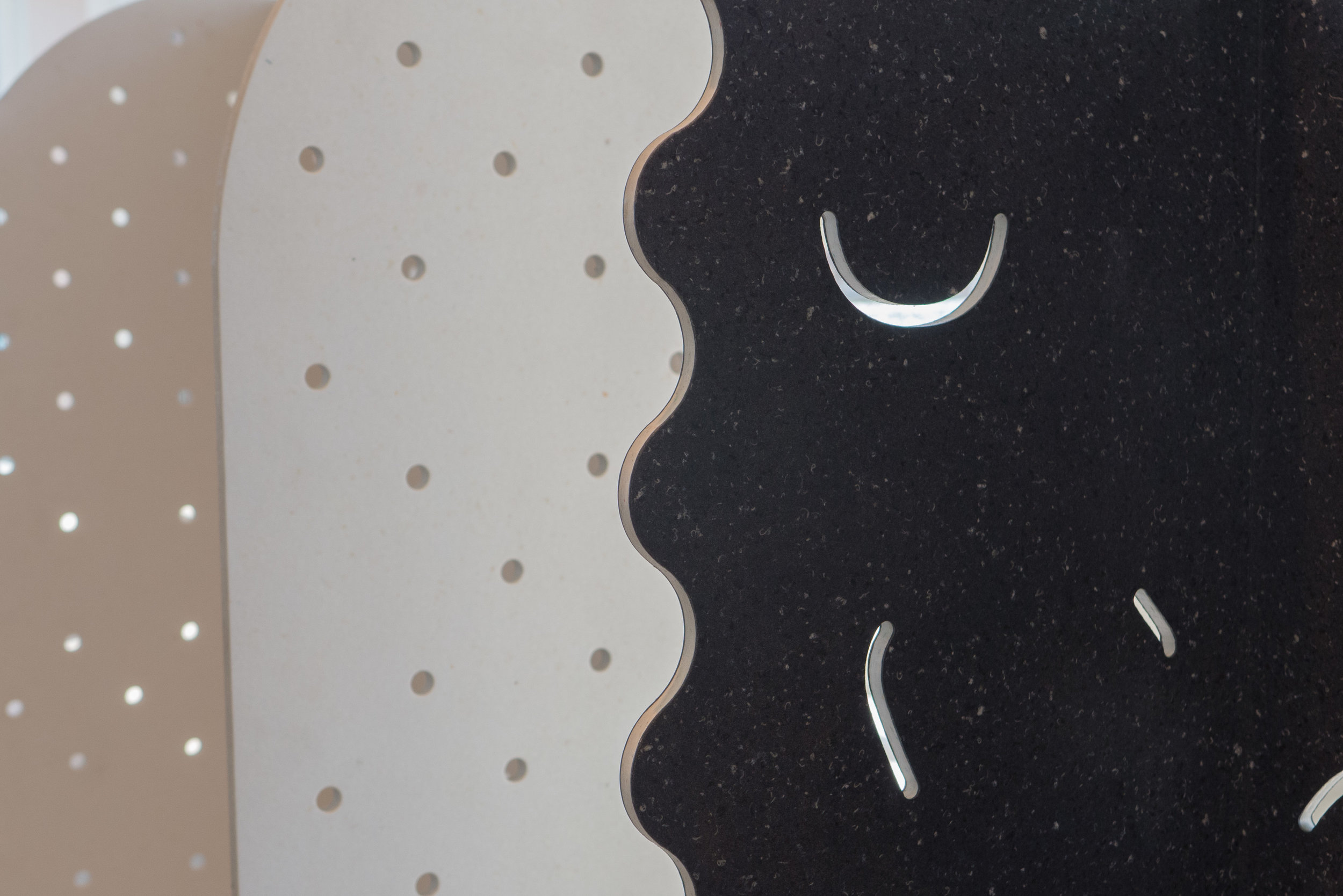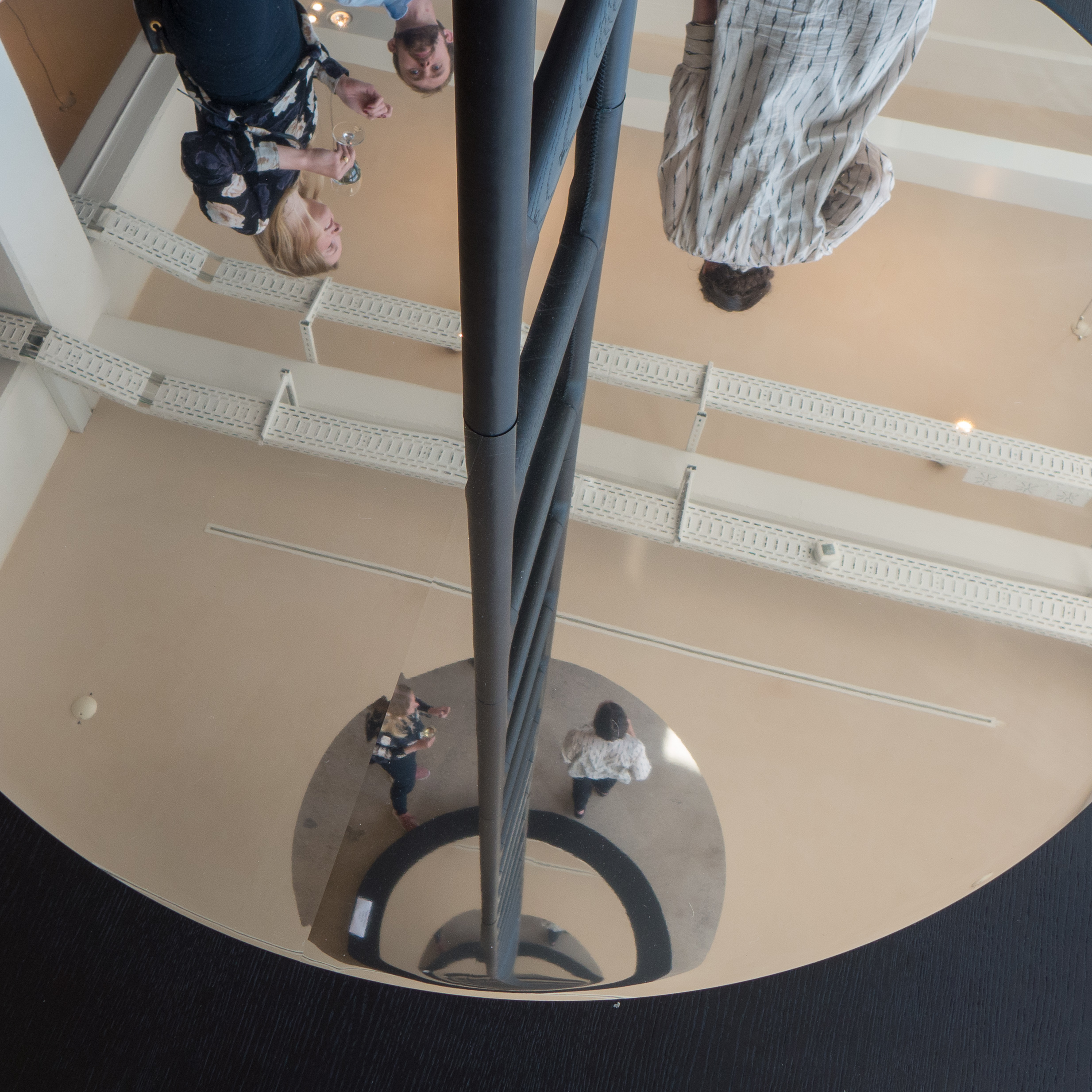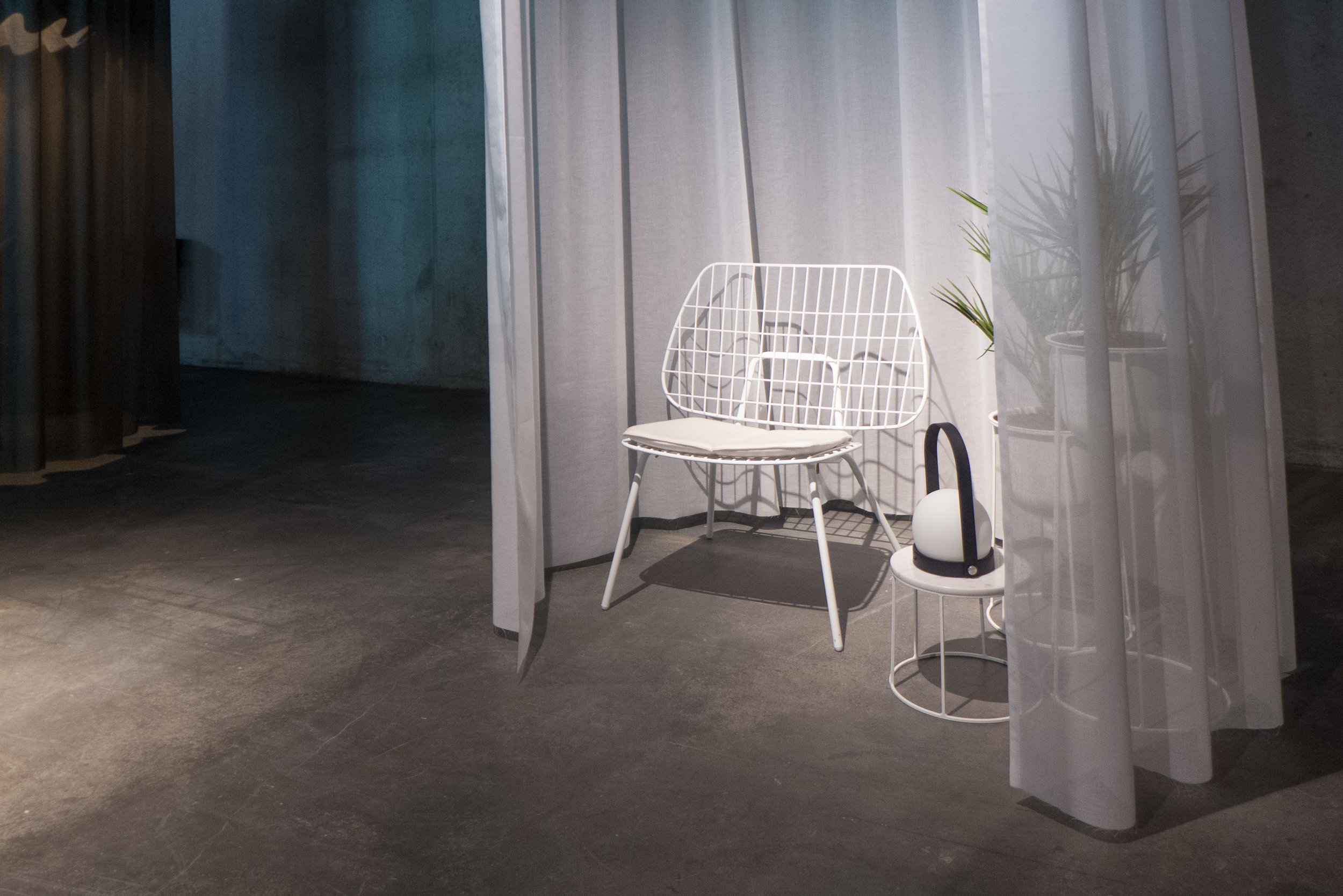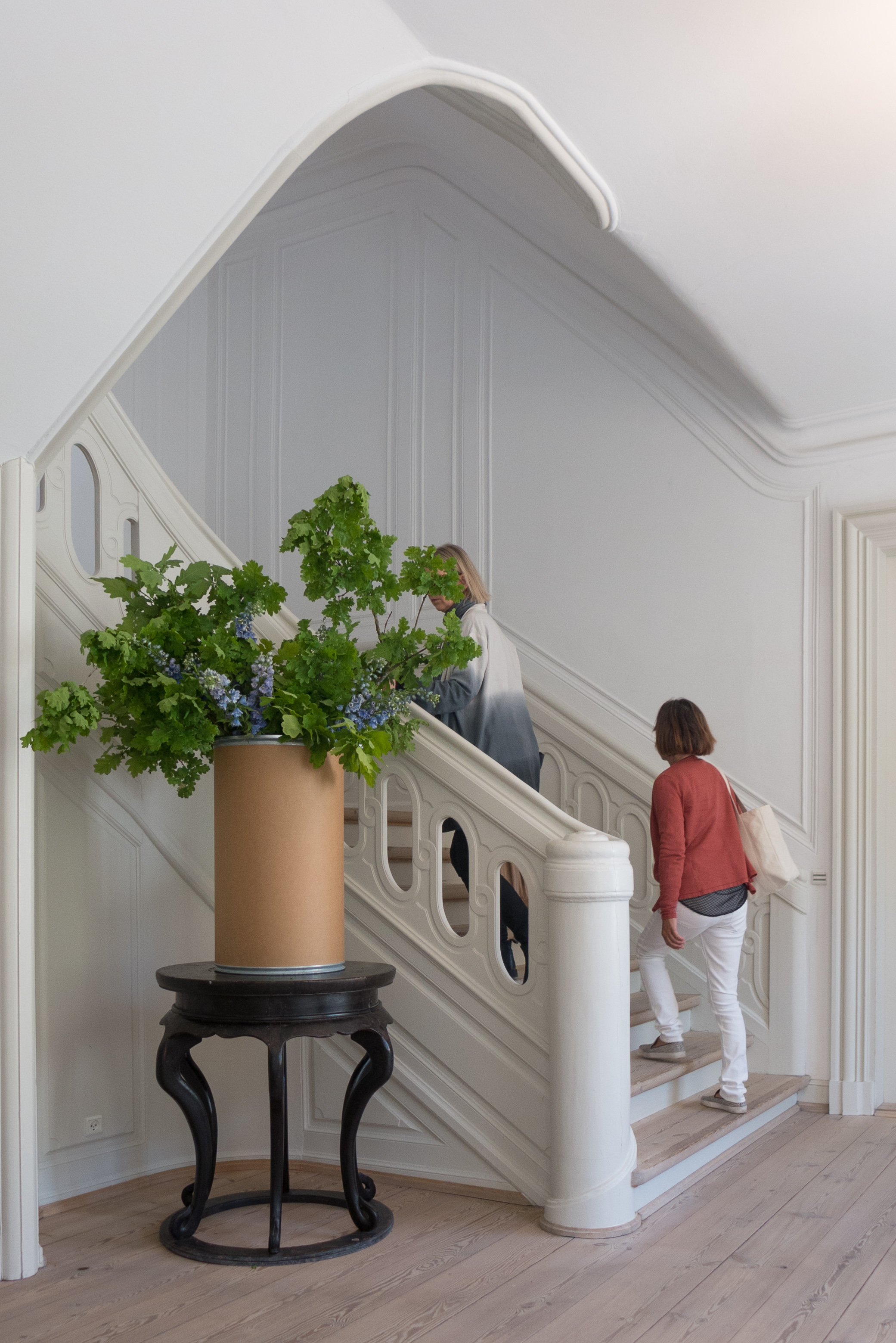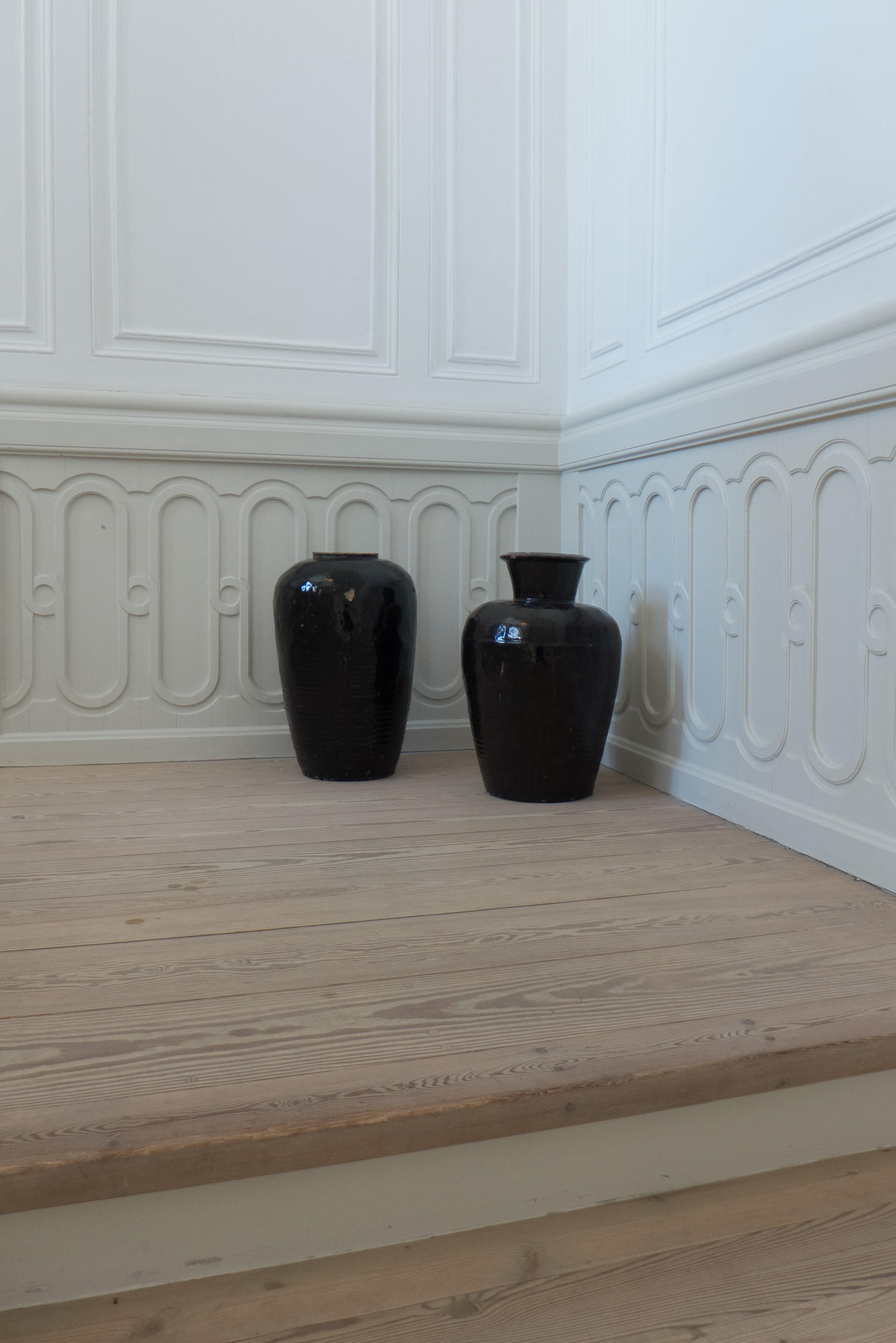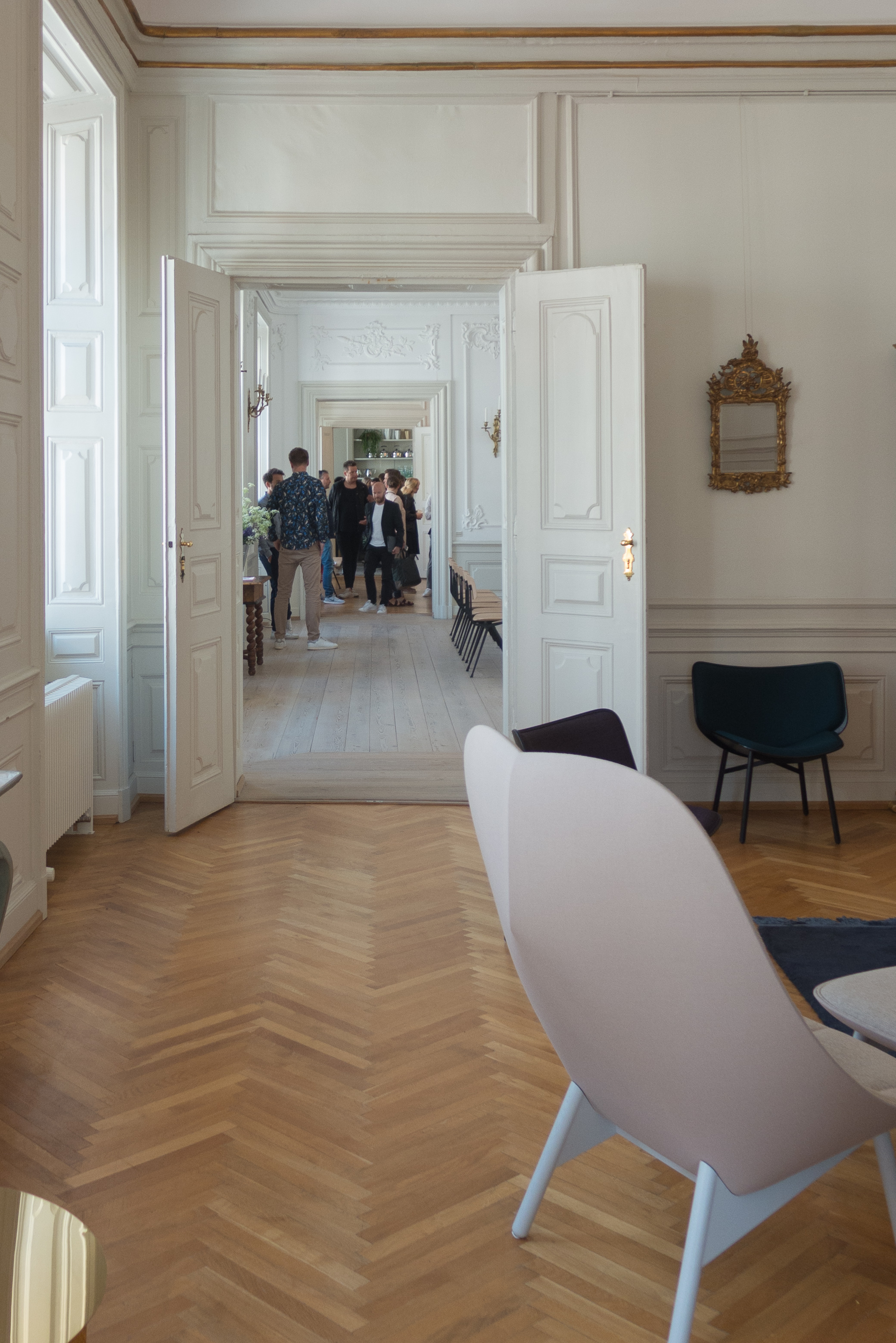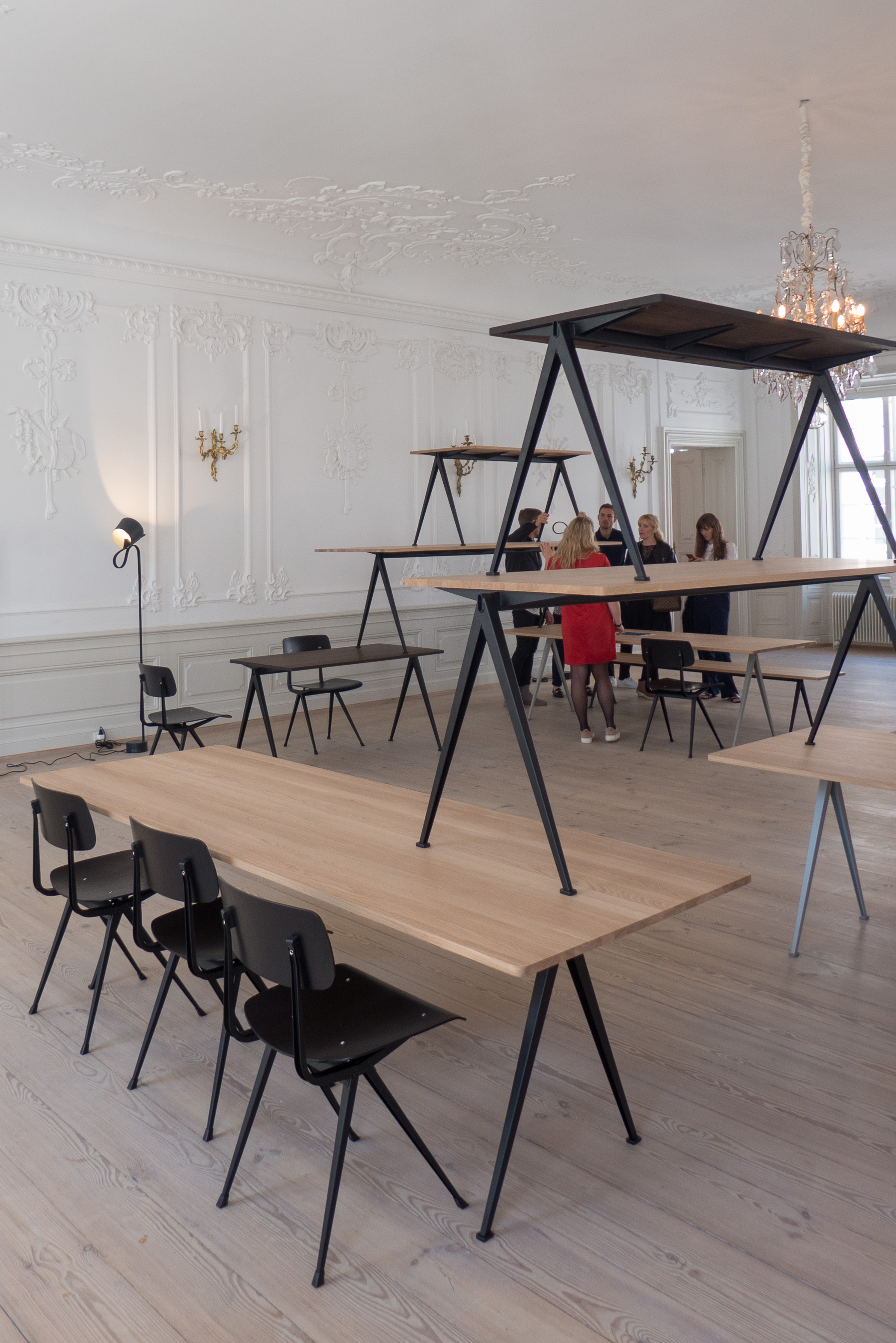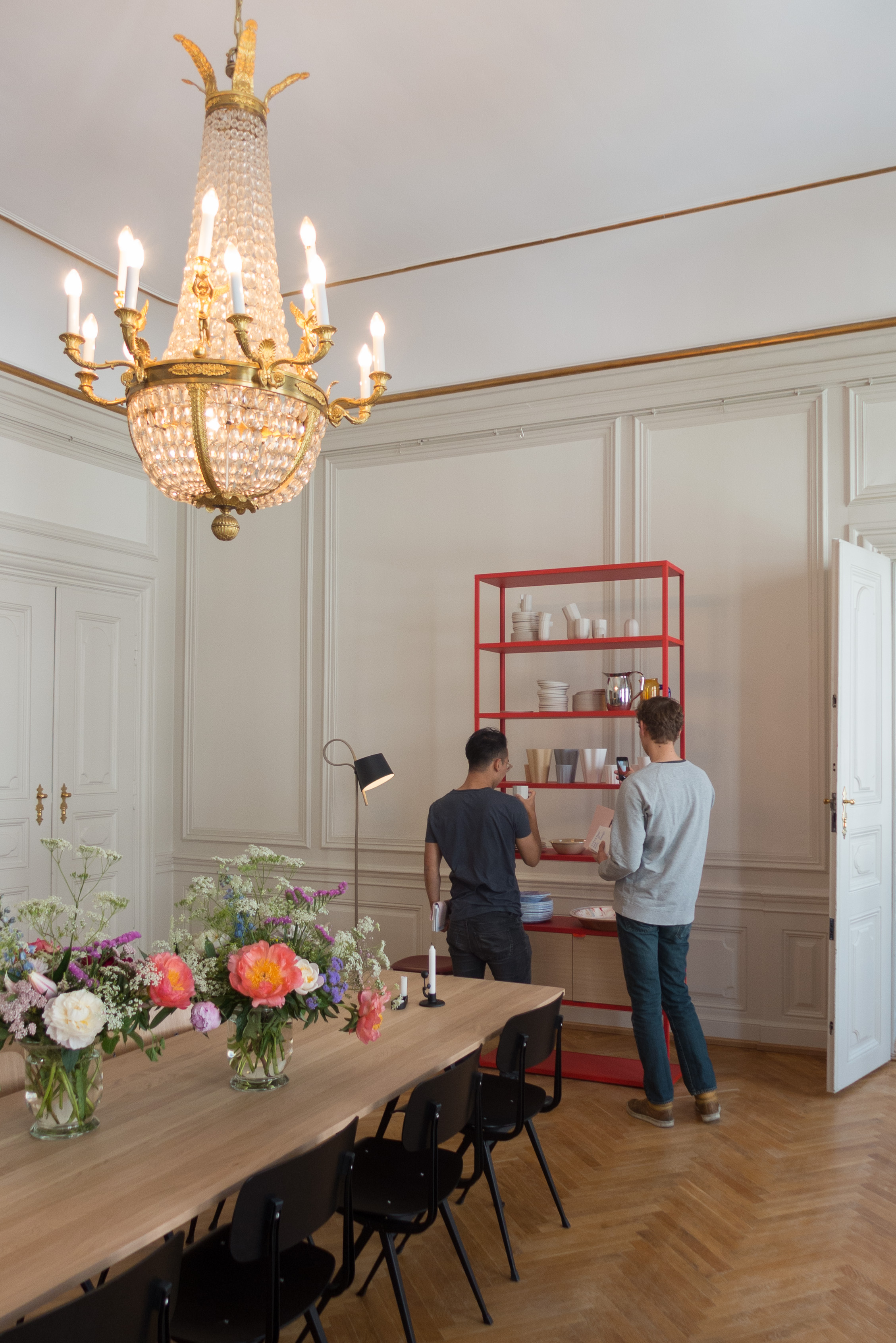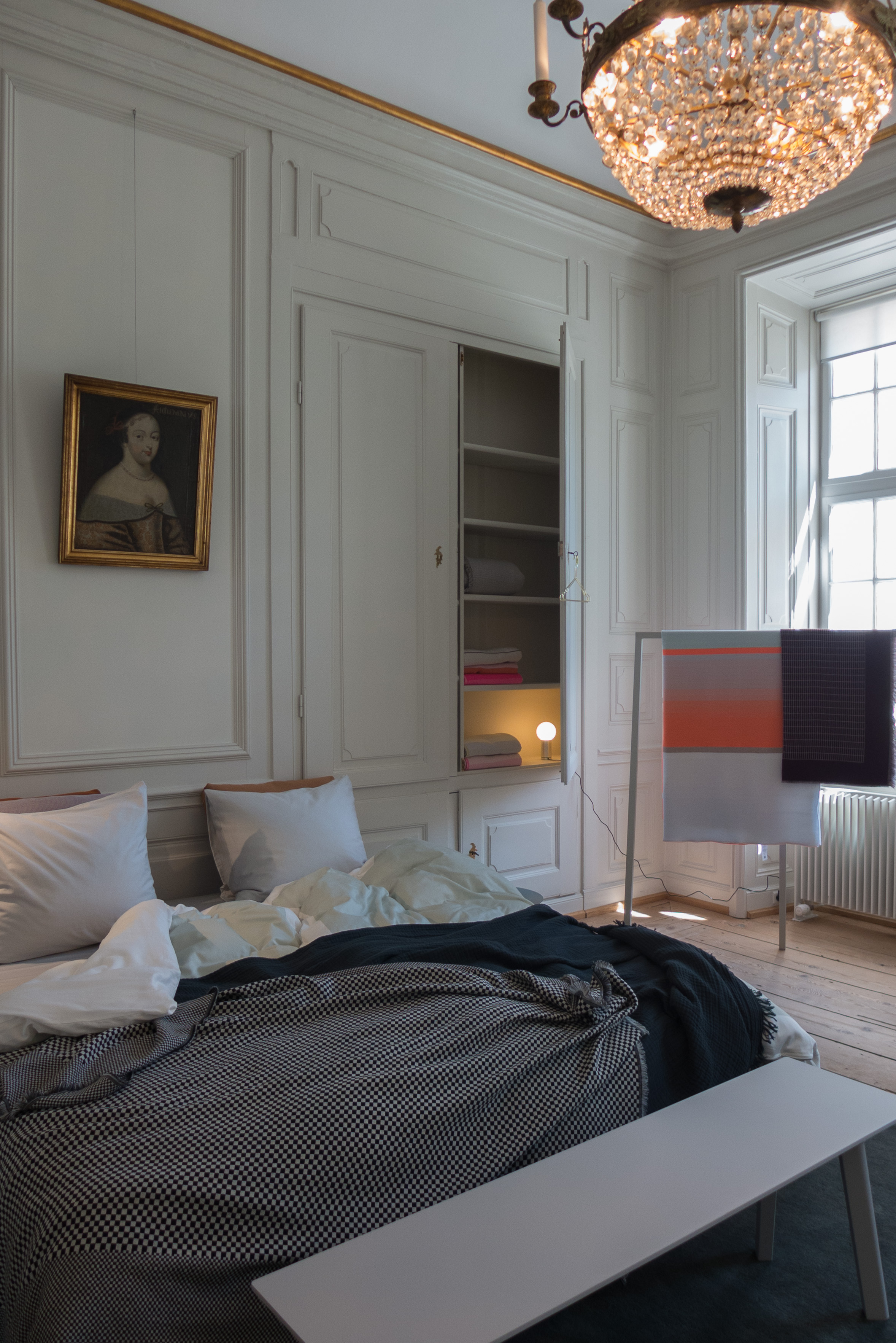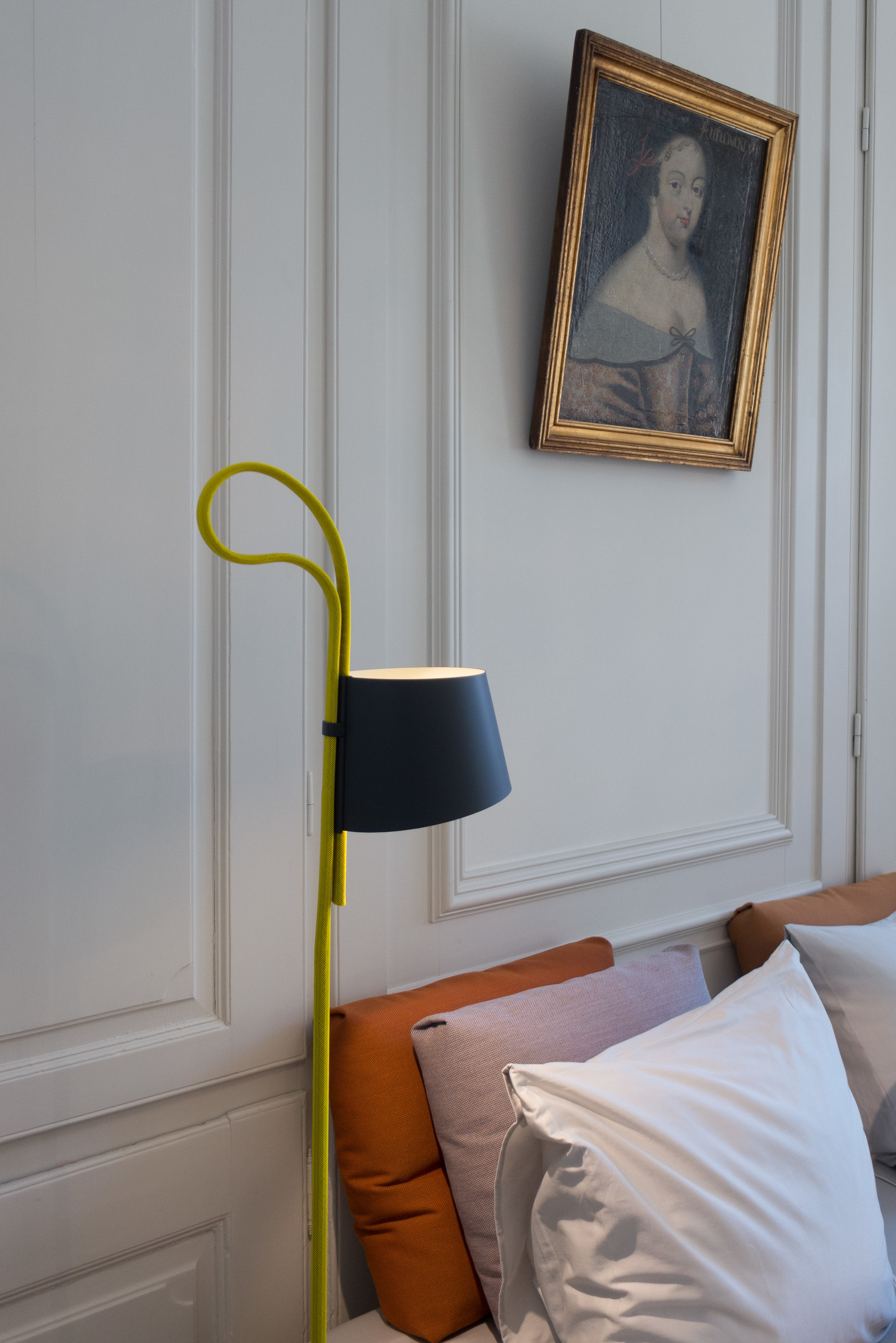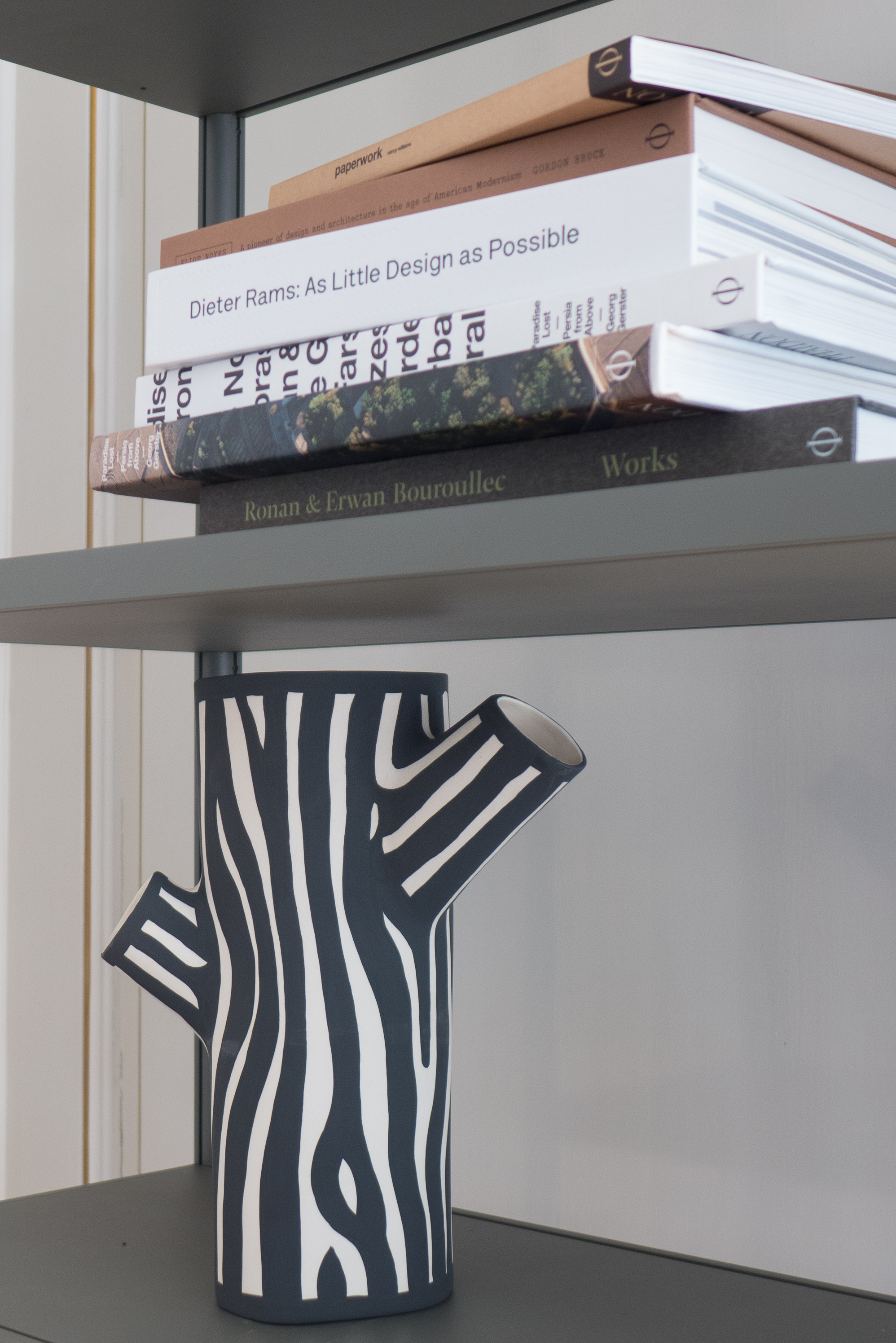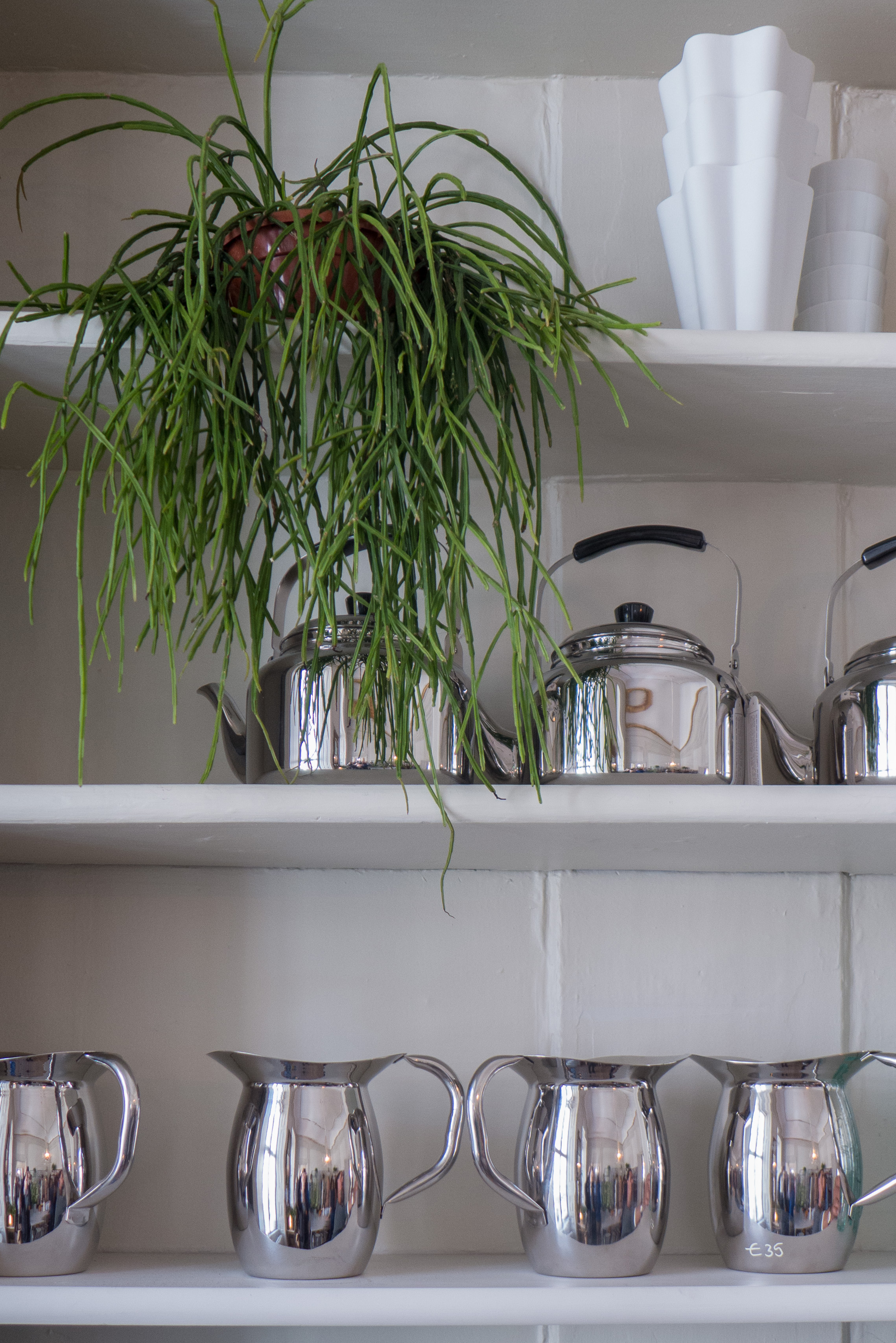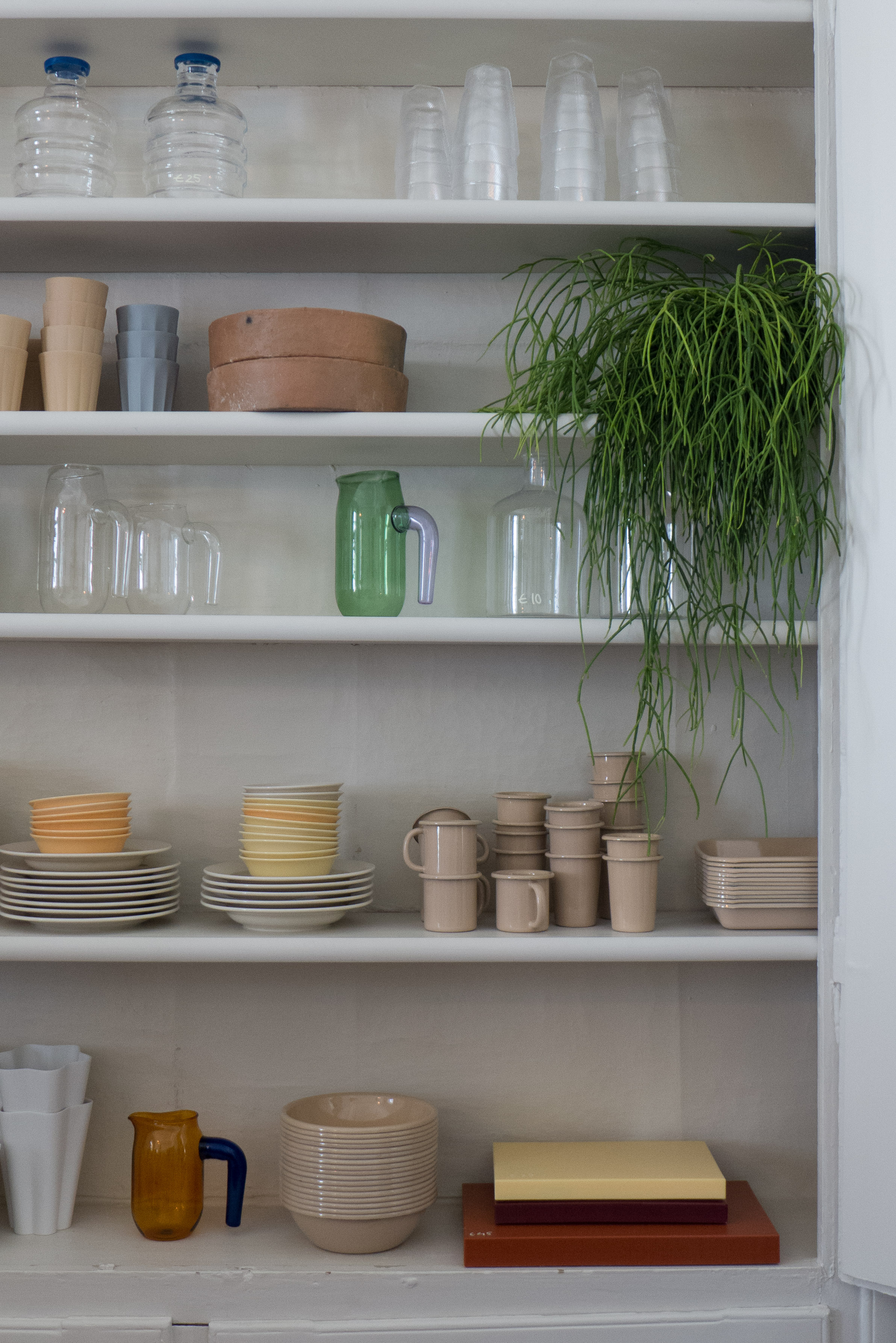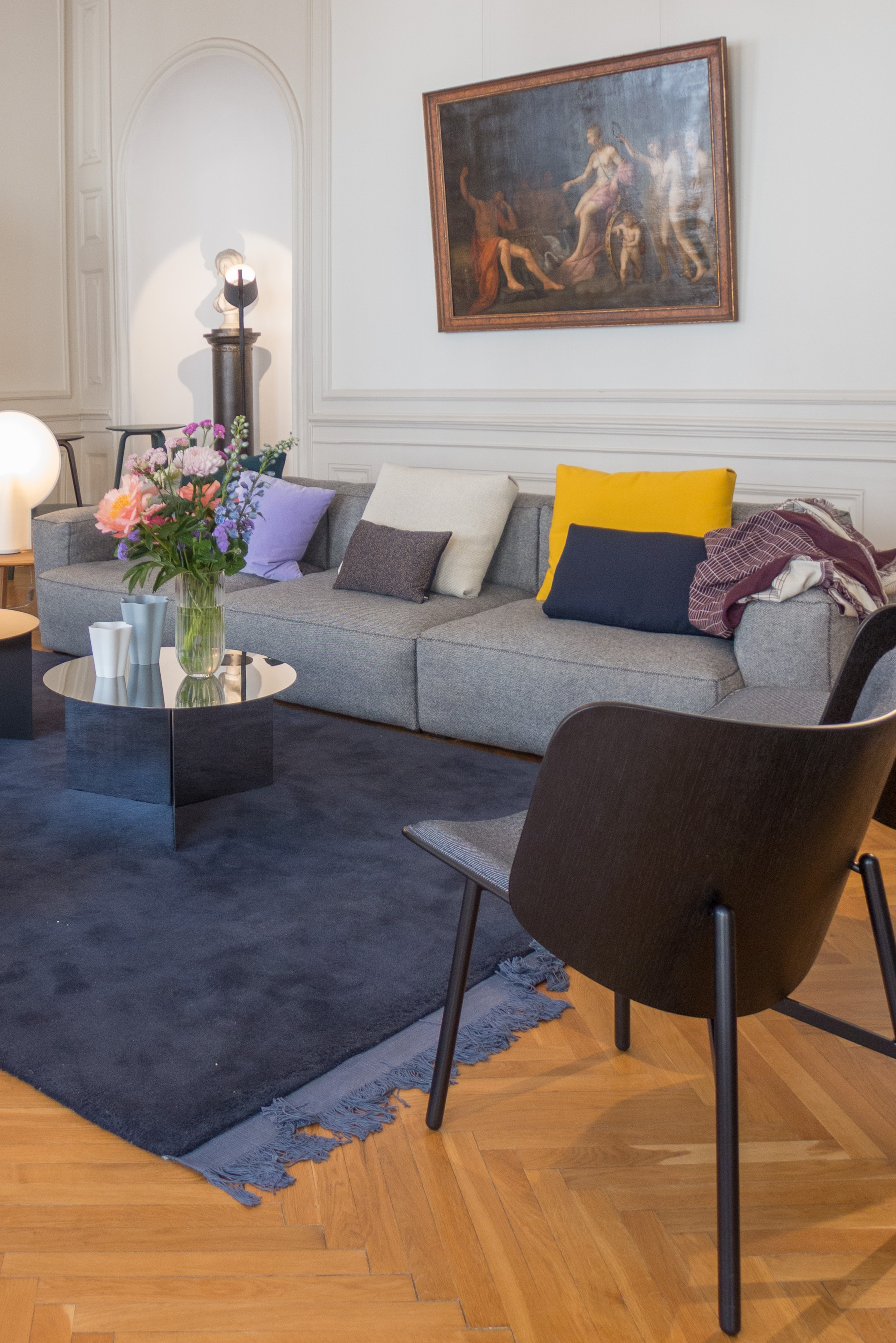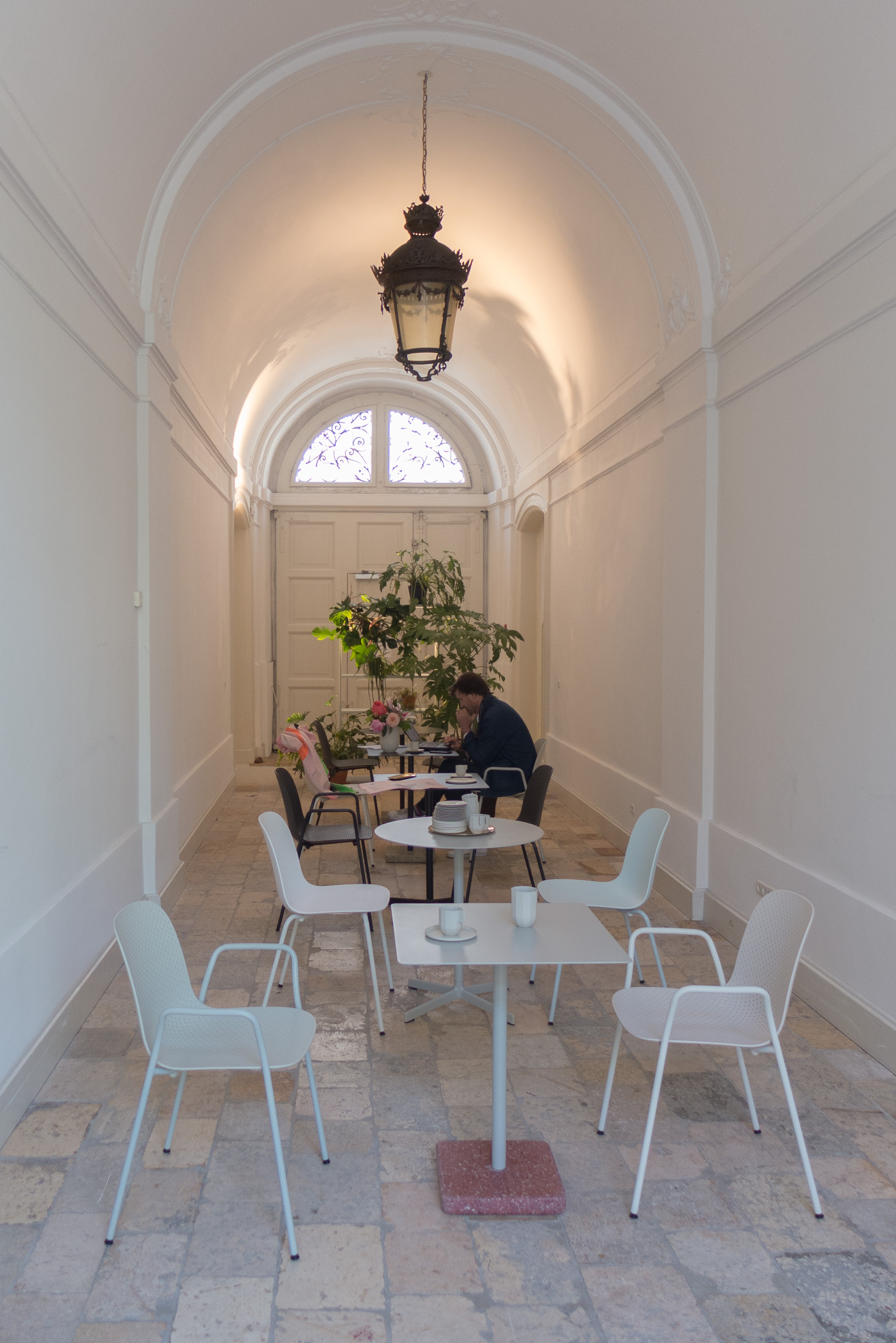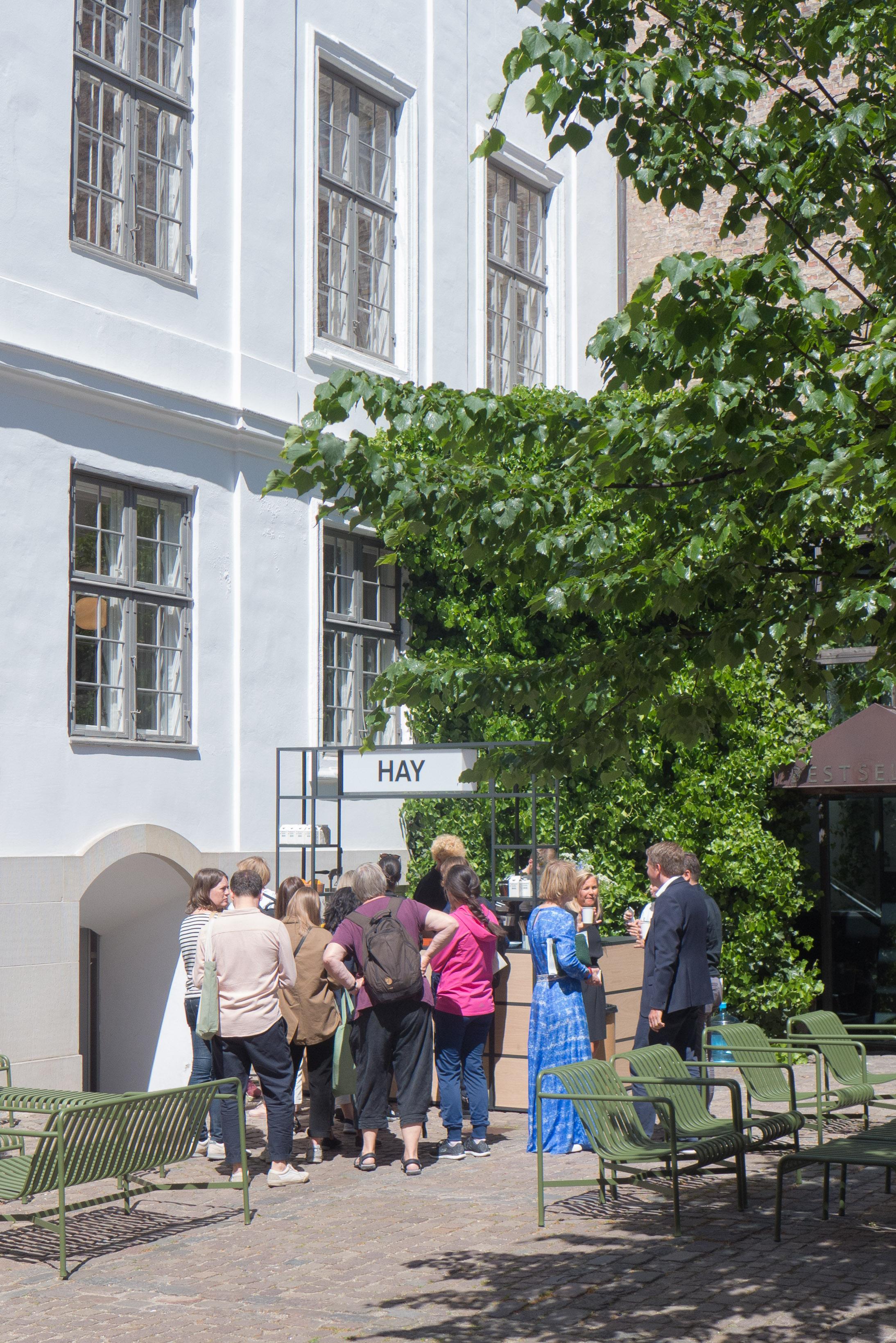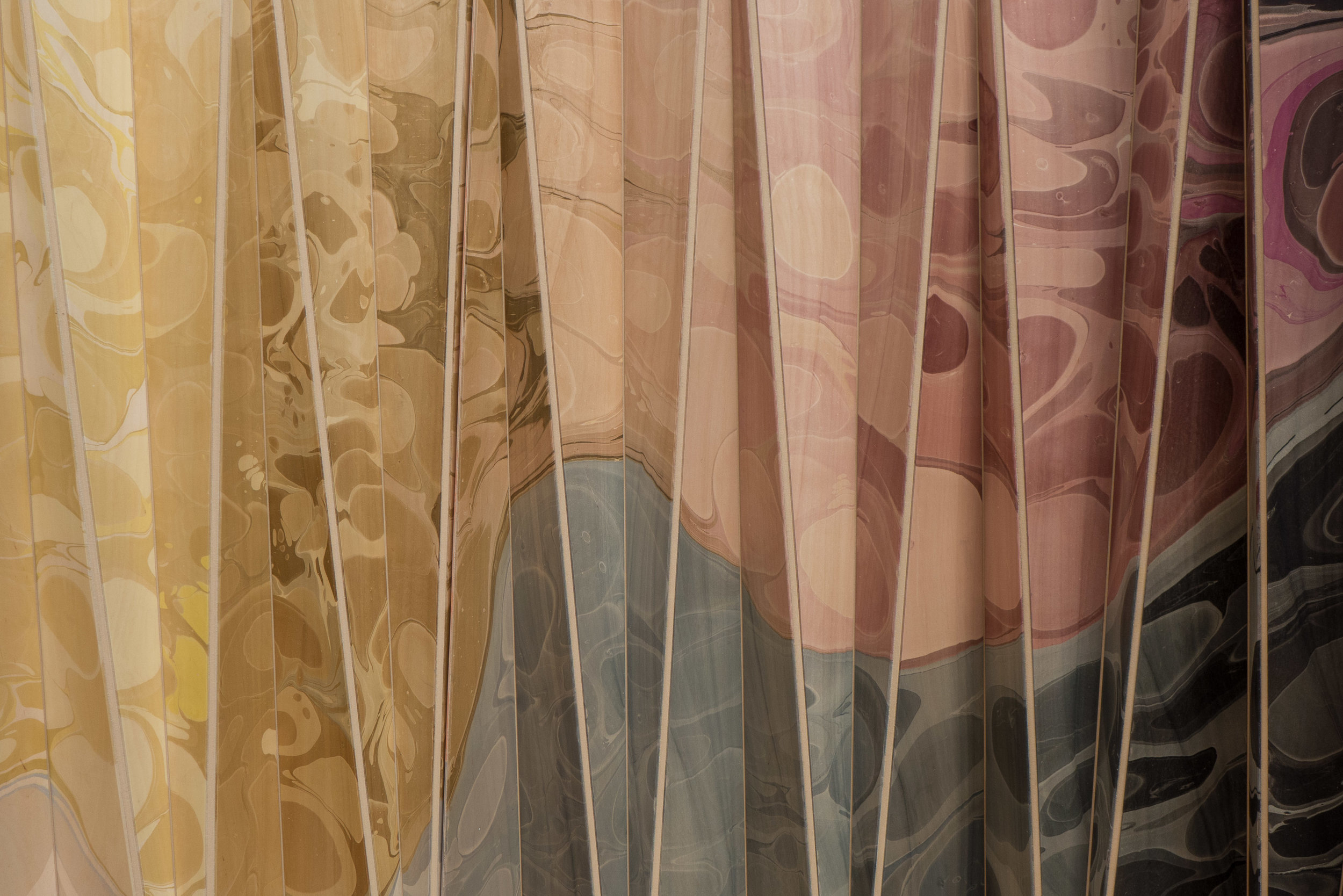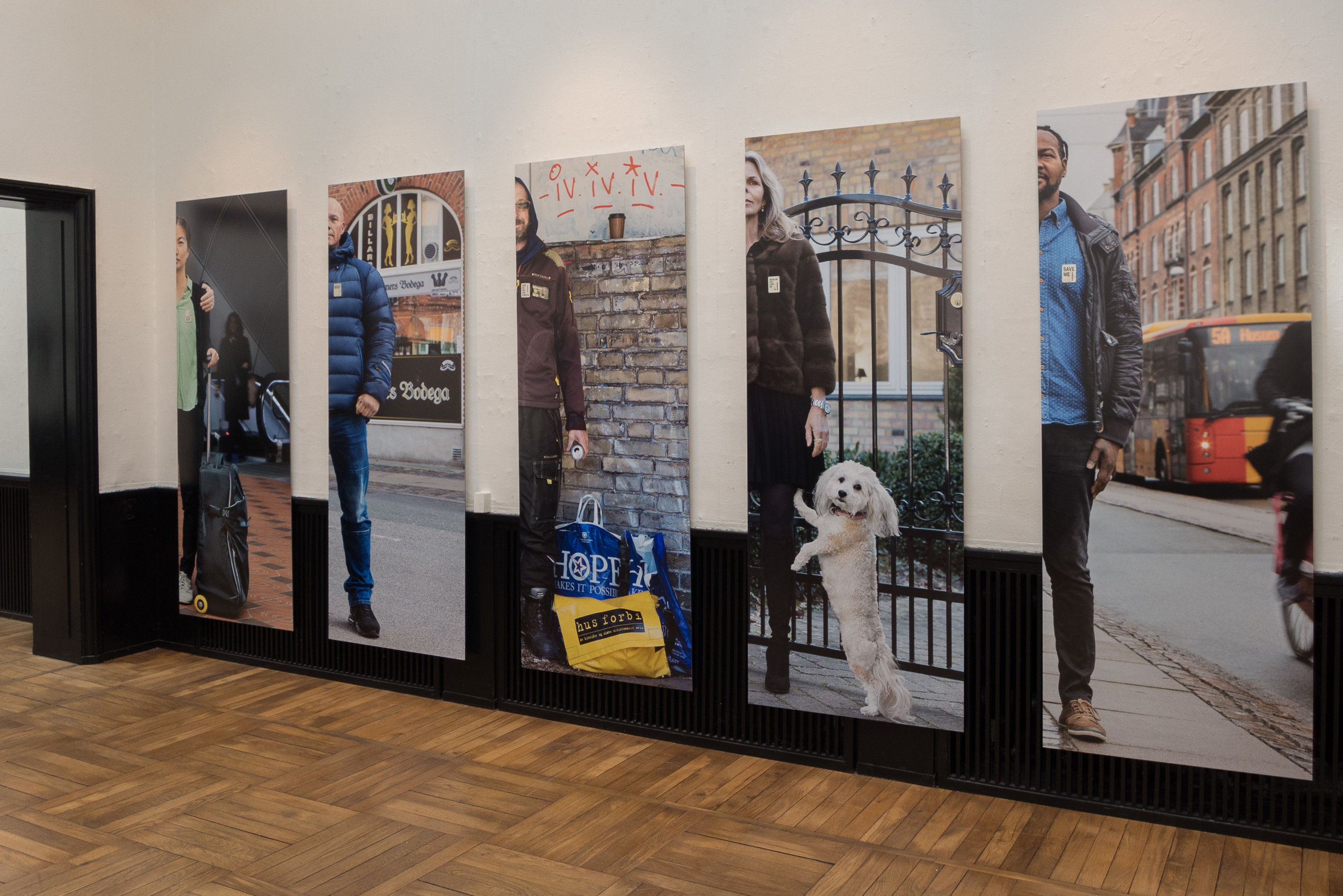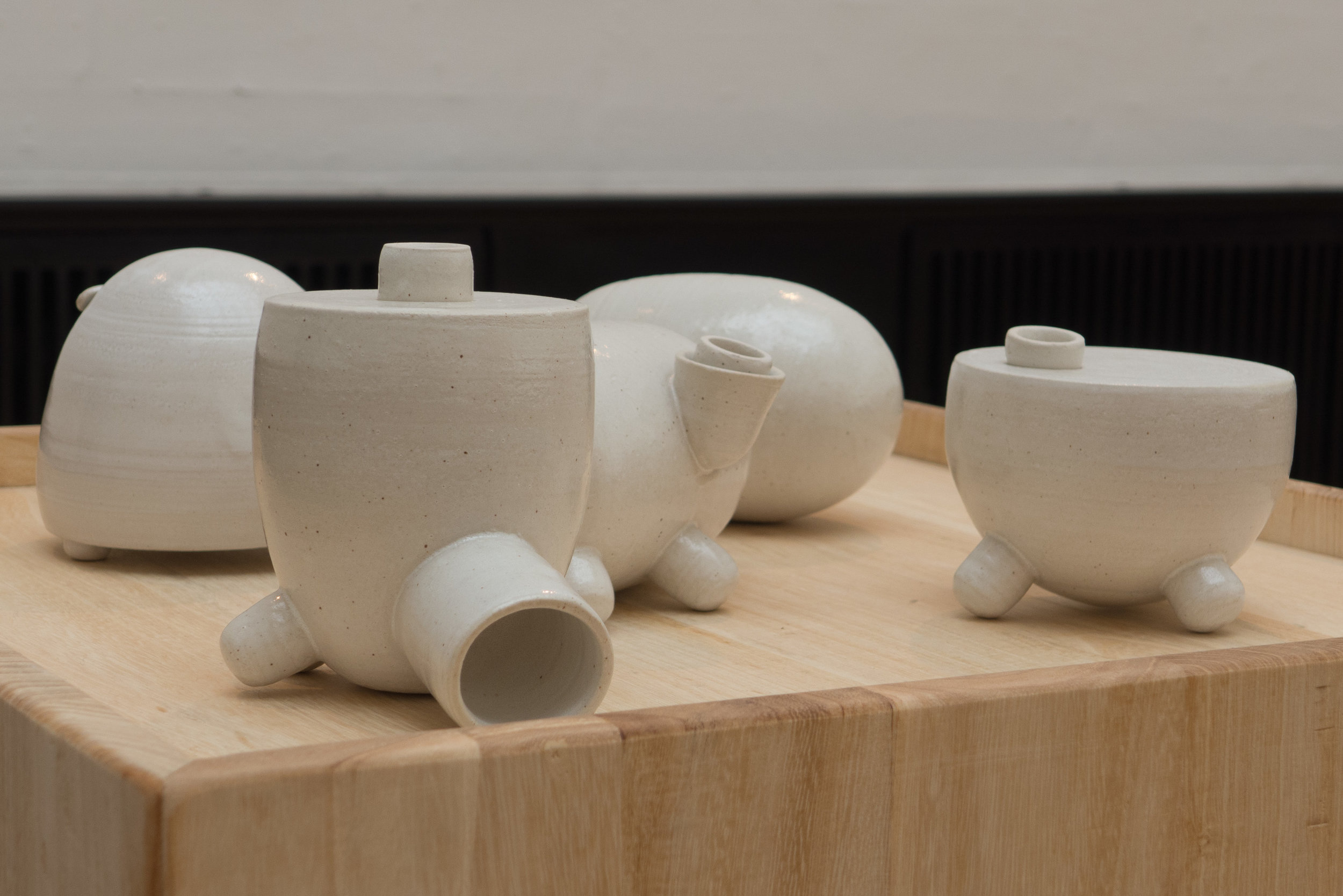normann copenhagen - discovering spaces
/
Discovering Spaces has been the most recent exhibition or reorganisation at Normann Copenhagen.
In the long steel-lined entrance hall is a display of their chairs in some of the many possible configurations that can be chosen and then the large main ground-floor space beyond is now divided by tall blocks in strong colours and lengths of clear ‘butchers’ curtains that create a series of tightly-linked spaces and provide drama for the arrangement of their furniture and the clothing that is sold in the store.
The far high end wall of the space is now boldly striped in dark colours and lengths of carpet that continue down and across the floor.
Velvet-covered pouffs in the lower very pink gallery space are set in groups across the floor and across the ceiling and fixed to the walls … probably not an idea to try at home but actually what the display in the store does show is that blocking diagonal views, changing lighting from one space to another and breaking up space all add drama. Is this designers suggesting a move away from the New York loft look of large expanses of floor in concrete or wide boards … preferably distressed.
Maybe it’s because the Normann show room is in what was an old cinema or maybe it was the dramatic relaunch of the space last year but the glamour does seem to suggest that the inspiration might be less International Modern and more Art Deco.








